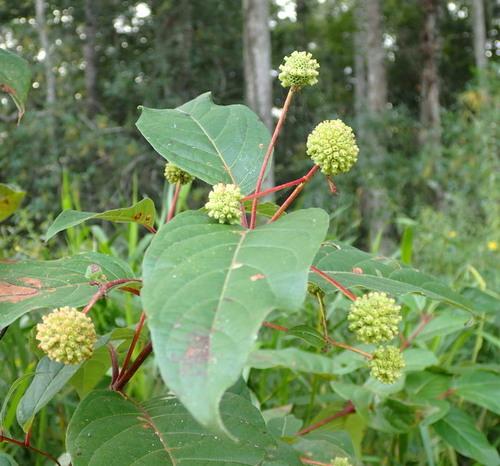
Common buttonbush (Cephalanthus occidentalis)
Common buttonbush, also known as Honey-bells, Button-ball
The common buttonbush (Cephalanthus occidentalis) typically reaches heights of 1.8 to 3.5 meters and thrives in various temperature zones, commonly found near swamps, ponds, and streams. Its distinctive spherical white flowers and button-like fruit are key attractions for wildlife. While its foliage is toxic to livestock, the plant offers nectar that sustains bees, butterflies, and hummingbirds. Birds, especially ducks, consume its seeds and often nest within its protective cover.
Key Facts About Common buttonbush
Attributes of Common buttonbush
Lifespan
Perennial
Plant Type
Shrub
Plant Height
1 m to 6 m
Spread
1.2 m to 2.5 m
Leaf Color
Green
Flower Size
2 cm to 3.5 cm
Flower Color
White Yellow Cream
Scientific Classification of Common buttonbush
Phylum
Vascular plants
Class
Dicotyledons
Order
Gentianales
Family
Madder
Genus
Buttonbush
Species
Common buttonbush